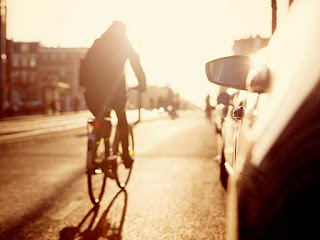Hey, I found it! The miracle cure!
For what?, you ask.
Cravings for drugs, alcohol, sex and Friends.
The cure is really, really simple--and you might even have it on your iPhone.
All right, I'll tell you what it is: playing Tetris.
I'm not kidding: that is the conclusion of a research team. According to their findings, "cognitive interference" can be used to reduce cravings for substances and addictive behaviors.
Of course, a term like "cognitive interference" could only be coined by someone trying to get or keep a research grant (or by someone paid to explain how a celebrity ran over some unfortunate soul). In plain English, it means "distraction": Playing Tetris deflects your attention away from eating pizzas, drinking beer, making love or the "He's her lobster!" episode.
Believe it or not, greater minds than the ones who discovered "cognitive interference" have come up with even more ludicrous conclusions from funded research.
As an example, the esteemed fellows at the National Highway Traffic Administration have figured out how to prevent 90 percent of all bicycle accidents. Their conclusion is so simple, and so commonsensical that I wondered how I didn't come up with it myself.
According to lead researcher Dr. Laura Gafferty, "Our data confirm that the vast majority of cyclist injuries can be avoided by driving an automobile instead of biking around like some weirdo." She added that while bicycle riding is perfectly acceptable for children under 12, it isn't recommended for any adult who isn't competing in the Tour de France. "Regular people drive cars because it's the normal and not the abnormal thing to do," she explained. If every cyclist drove a car "like you're supposed to as an adult", cycling-related fatalities would "drop by 40 percent in the first six months alone," she claimed.
Her team's study was published in that most respected of all journals: The Onion.
For what?, you ask.
Cravings for drugs, alcohol, sex and Friends.
The cure is really, really simple--and you might even have it on your iPhone.
All right, I'll tell you what it is: playing Tetris.
I'm not kidding: that is the conclusion of a research team. According to their findings, "cognitive interference" can be used to reduce cravings for substances and addictive behaviors.
Of course, a term like "cognitive interference" could only be coined by someone trying to get or keep a research grant (or by someone paid to explain how a celebrity ran over some unfortunate soul). In plain English, it means "distraction": Playing Tetris deflects your attention away from eating pizzas, drinking beer, making love or the "He's her lobster!" episode.
Believe it or not, greater minds than the ones who discovered "cognitive interference" have come up with even more ludicrous conclusions from funded research.
As an example, the esteemed fellows at the National Highway Traffic Administration have figured out how to prevent 90 percent of all bicycle accidents. Their conclusion is so simple, and so commonsensical that I wondered how I didn't come up with it myself.
According to lead researcher Dr. Laura Gafferty, "Our data confirm that the vast majority of cyclist injuries can be avoided by driving an automobile instead of biking around like some weirdo." She added that while bicycle riding is perfectly acceptable for children under 12, it isn't recommended for any adult who isn't competing in the Tour de France. "Regular people drive cars because it's the normal and not the abnormal thing to do," she explained. If every cyclist drove a car "like you're supposed to as an adult", cycling-related fatalities would "drop by 40 percent in the first six months alone," she claimed.
Her team's study was published in that most respected of all journals: The Onion.


















